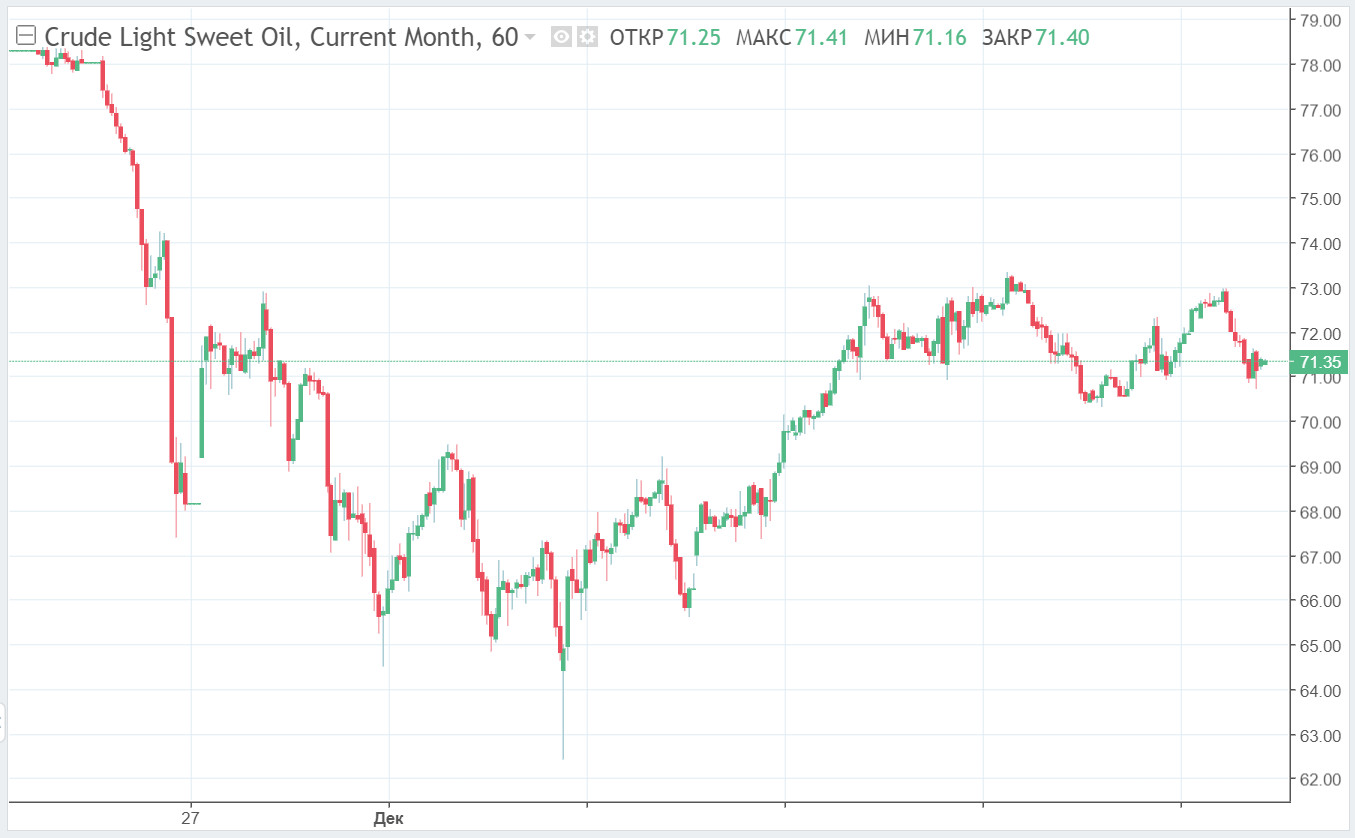
Oil was depreciating on Monday. Last week, oil quotes were supported by reports that the new coronavirus was no more dangerous than other variants.On Monday, however, fears over the virus escalated again and put the main crude contracts under pressure. First of all, it is still not clear whether the existing vaccines can provide protection against the new coronavirus strain. In addition, according to Sky News, one patient with the Omicron strain has recently died in the UK.
Against this backdrop, Brent crude declined by 78 cents, or 1%, to $74.37 per barrel. WTI crude oil was also down by 1%, or 72 cents, to $70.95 a barrel. At the moment of publication, WTI was trading at $71.35.

By the way, both oil benchmarks showed a significant increase last week - by about 8%. This was the first weekly rise in oil prices in the last seven weeks.
Apparently, Omicron is the main reason behind the drop in oil prices. Despite considerable gains in the previous week, current prices remain well below the early highs that were observed before the Omicron discovery.
The World Health Organization has finally announced that the novel virus type has to be treated seriously because in some cases, vaccines may turn out to be ineffective against it. This assumption is also confirmed by the University of Oxford. Researchers confirmed that the existing vaccines may not be sufficient to protect us against the new infection even in combination with booster doses.
OPEC officials on Monday raised their forecasts for global oil demand in the first quarter of 2022. However, the oil demand forecast for the whole year remained the same. OPEC said that the new strain will definitely affect oil demand, but its impact won't be significant and is likely to be short-lived. Members of the alliance believe that the world is somehow prepared to combat COVID-19, so any difficulties that arise from it will be resolved promptly.
As for further plans for oil production, the OPEC grouping will meet on January 4 to make this decision. The Iraqi oil minister announced last weekend that he expects OPEC to maintain the current policy of a steady output increase each month, namely by 400,000 barrels per day.
Meanwhile, oil production is growing in the United States, having reached its highest level since May 2020 - 11.7 million barrels per day. In addition, data from Baker Hughes published on Friday showed a recovery in crude production and a rise in the number of active rigs by another 7 units (to 576), reaching the highest count since April 2020. As we can see, the supply of oil is gradually expanding. Yet, the pace of demand recovery is clearly limited due to renewed restrictions amid the new virus strain and the slowdown of the economic recovery.
Commerzbank analyst Carsten Fritsch believes that the oil market will see a significant surplus in the first quarter of 2022, which is why oil prices may fall in the next couple of weeks.
Apparently, there is a very fragile balance in the commodities sector today. The imbalance may be easily caused by the new little-studied Omicron strain, possible lockdowns, the reaction of global regulators, as well as further plans of oil producers.
 English
English 
 Русский
Русский Bahasa Indonesia
Bahasa Indonesia Bahasa Malay
Bahasa Malay ไทย
ไทย Español
Español Deutsch
Deutsch Български
Български Français
Français Tiếng Việt
Tiếng Việt 中文
中文 বাংলা
বাংলা हिन्दी
हिन्दी Čeština
Čeština Українська
Українська Română
Română

